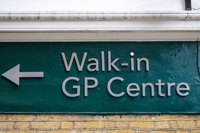
Frontier Economics has today published research, commissioned by the Department for Culture, Media and Sport (DCMS), which breaks new ground by creating a methodology to monetise the health and wellbeing benefits of cultural and heritage engagement.
Conducted as part of the DCMS’ Cultural and Heritage Capital (CHC) Programme, and delivered in partnership with University College London’s Social Biobehavioural Research Group, the analysis values the improvement in UK adults’ general health from engaging with culture and heritage at just over £8bn a year.
The analysis helps to overcome the common misconception that the monetary value of investing in arts and culture is close to zero and offers a way for decision-makers to assess the value of investing in culture and heritage. This is in line with the CHC Programme’s objectives of ensuring decisions are based on the economic, social and cultural contribution the sectors make to society.
Frontier created 13 separate models, each corresponding to existing evidence produced by the Social Biobehavioural Research Group and other researchers, investigating the impact of a specific type of cultural or heritage engagement on a specific outcome, for a specific group of the population. For example, arts-based museum activities and general health in older adults. Each model monetises benefits to individuals’ quality of life using either quality-adjusted life-years (QALYs) or wellbeing-adjusted life-years (WELLBYs).
In addition, where feasible, each model also includes the health and social savings that come from improved health and wellbeing, and the wider societal benefits from improved productivity. (Refer to the ‘notes to editors’ section for further information).
Sarah Karlsberg at Frontier Economics explains: “Improving workforce participation and the role of prevention in health care have emerged as priority areas for the UK Government. There is also a growing body of evidence that demonstrates how engaging with culture and heritage can help to prevent, treat, and manage physical and mental health problems.
“Our new research is important as decisions made in the absence of appropriate evidence may assume that the monetary value of some investments is zero. This has historically encouraged investment away from areas such as culture and heritage where the wider impact on the economy has been difficult to monetise.”
Frontier estimates that the health and wellbeing benefits associated with an individual adult engaging with culture and heritage every few months or more (e.g. visiting a museum, gallery or watching a concert) are worth around £1,000 per year. At the population level, societal benefits, which include increased productivity due to better health, are worth just over £8bn per year.
Professor Daisy Fancourt, head of the Social Biobehavioural Research Group, adds: “Scientific research is increasingly demonstrating that the arts are a fundamental health behaviour, just like physical activity, diet and sleep. As individuals, if we want to live happier and healthier lives, engaging in the arts is an evidence-based way of achieving this aim. As a society, when we’re thinking about how to shift to preventative models of health, investing in arts and cultural training, activities and community venues should be considered a priority.”
Heritage Minister, Sir Chris Bryant says: “Culture and heritage are the beating heart of communities up and down the country, inspiring, educating and enlightening people from all walks of lives and helping to tell our national story.
“The research, commissioned by DCMS, shows how culture and heritage can directly impact our lives, improving our physical and mental wellbeing and highlights the importance of preserving our rich heritage to ensure it can enrich the lives of many, for years to come.”









